|
|
|
Cambridge University Press
|
This textbook provides a concise, clear, and accessible introduction to current syntactic theory, drawing on the key concepts of Chomsky's Minimalist Program. Assuming little or no prior grammatical knowledge, Andrew Radford takes students through a wide range of topics in English syntax, beginning at an elementary level and progressing in stages towards more advanced material. There is an extensive glossary of technical terms, and each chapter contains a workbook section with 'helpful hints', exercises and model answers, suitable for both class discussion and self-study. This is an abridged version of Radford's major new textbook Minimalist Syntax (also published by Cambridge University Press), and will be welcomed as a short introduction to current syntactic theory. |
|
John Hobson claims that throughout its history most international theory has been embedded within various forms of Eurocentrism. Rather than producing value-free and universalist theories of inter-state relations, international theory instead provides provincial analyses that celebrate and defend Western civilization as the subject of, and ideal normative referent in, world politics. Hobson also provides a sympathetic critique of Edward Said's conceptions of Eurocentrism and Orientalism, revealing how Eurocentrism takes different forms, which can be imperialist or anti-imperialist, and showing how these have played out in international theory since 1760. The book thus speaks to scholars of international relations and also to all those interested in understanding Eurocentrism in the disciplines of political science/political theory, political economy/international political economy, geography, cultural and literary studies, sociology and, not least, anthropology. |
|
How did the biological, brain and behavioural structures underlying human language evolve? When, why and where did our ancestors become linguistic animals, and what has happened since? This book provides a clear, comprehensive but lively introduction to these interdisciplinary debates. Written in an approachable style, it cuts through the complex, sometimes contradictory and often obscure technical languages used in the different scientific disciplines involved in the study of linguistic evolution. Assuming no background knowledge in these disciplines, the book outlines the physical and neurological structures underlying language systems, and the limits of our knowledge concerning their evolution. Discussion questions and further reading lists encourage students to explore the primary literature further, and the final chapter demonstrates that while many questions still remain unanswered, there is a growing consensus as to how modern human languages have arisen as systems by the interplay of evolved structures and cultural transmission. |
|
This text examines sociopolitical, economic, familial, and educational agendas that influence attainment of second language literacy. The paperback examines the sociopolitical, economic, familial, and educational agendas that influence an immigrant's attainment of literacy in a new language. Each agenda is introduced through illuminating case studies drawn from research in North America, Australia, and the United Kingdom. Professor McKay analyzes the conflicts among different interest groups and paints a sensitive picture of how the needs of an individual may be at odds with any and all of the various literacy agendas. The book addresses teachers and teachers-in-training involved in second language education, whether their students are in special language classes, bilingual education, or enrolled in the mainstream curriculum. It also provides valuable insights to individuals responsible for developing second language literacy policies in the political, labor, and educational sectors. |
|
American Criminal Justice Policy examines many of the most prominent criminal justice policies on the American landscape and finds that they fall well short of achieving the accountability and effectiveness that policymakers have advocated and that the public expects. The policies include mass incarceration, sex offender laws, supermax prisons, faith-based prisoner reentry programs, transfer of juveniles to adult court, domestic violence mandatory arrest laws, drug courts, gun laws, community policing, private prisons, and others. Optimistically, Daniel P. Mears argues that this situation can be changed through systematic incorporation of evaluation research into policy development, monitoring, and assessment. To this end, the book provides a clear and accessible discussion of five types of evaluation — needs, theory, implementation or process, outcome and impact, and cost-efficiency. It identifies how these can be used both to hold the criminal justice system accountable and to increase the effectiveness of crime control and crime prevention efforts. |
|
Thought-provoking and accessible in approach, this book offers a classic introduction to European law. Taking a clear structural framework, it guides the student through the subject's core elements from its creation and enforcement to the workings of the internal market. A flowing writing style combines with the use of illustrations and diagrams throughout the text to ensure the student understands even the most complex of concepts. This succinct and enlightening overview is required reading for all students of European law. |
|
Analog Optical Links presents the basis for the design of analog links. Following an introductory chapter, there is a chapter devoted to the development of the small signal models for common electro-optical components used in both direct and external modulation. However this is not a device book, so the theory of their operation is discussed only insofar as it is helpful in understanding the small signal models that result. These device models are then combined to form a complete link. With these analytical tools in place, a chapter is devoted to examining in detail each of the four primary link parameters; gain, bandwidth, noise figure and dynamic range. Of particular interest is the inter-relation between device and link parameters. A final chapter explores some of the trade offs among the primary link parameters. |
|
Originally published in 1929, this volume was intended to draw attention to the relatively neglected area of early Anglo-Irish literature. Covering the period between the Anglo-Norman settlement of Ireland and the printing of Richard Stanihurst's translation of Virgil, the text illustrates the richness of this literature through abundant quotation from a variety of sources, both religious and secular. The style is accessible and in keeping with Seymour's aim of making the ordinary reader aware of a literary tradition they might otherwise remain ignorant of. This is an important book that will be of value to anyone with an interest in early Irish literature, and the history of literary criticism. |
|
The methodology of English language education has been developed mainly in the English-speaking countries of 'the west' and does not always fit the needs of the rest of the world. Appropriate Methodology and Social Context investigates this state of affairs by looking at the wider social context of what happens between teachers and students. It uses an ethnographic framework to explore the complex and diverse cultures of classrooms, of student groups and teacher communities in different countries and educational environments. It goes on to argue that these factors have to be acknowledged in the design and implementation of appropriate methodologies. Although a major concern is with classroom teaching, the methodologies for curriculum and project management and design are also addressed. |
|
Speakers of British and American English display some striking differences in their use of grammar. In this detailed survey, John Algeo considers questions such as: Who lives on a street, and who lives in a street? Who takes a bath, and who has a bath? Who says Neither do I, and who says Nor do I? After 'thank you', who says Not at all and who says You're welcome? Whose team are on the ball, and whose team isn'te Containing extensive quotations from real-life English on both sides of the Atlantic, collected over the past twenty years, this is a clear and highly organized guide to the differences — and the similarities — between the grammar of British and American speakers. Written for those with no prior knowledge of linguistics, it shows how these grammatical differences are linked mainly to particular words, and provides an accessible account of contemporary English in use. |
|
An updated edition of this comprehensive narrative history, first published in 1989, incorporating a new chapter on the latest developments in Russian literature and additional bibliographical information. The individual chapters are by well-known specialists, and provide chronological coverage from the medieval period on, giving particular attention to the nineteenth and twentieth centuries, and including extensive discussion of works written outside the Soviet Union. The book is accessible to students and non-specialists, as well as to scholars of literature, and provides a wealth of information. |
|
Most people think of the Oxford English Dictionary (OED) as a distinctly British product. Begun in England one hundred and fifty years ago, it took over sixty years to complete and when it was finally finished in 1928 the British Prime Minister heralded it as a 'national treasure.' This book shows that the dictionary is not as 'British' as we all thought. The linguist and lexicographer, Sarah Ogilvie, combines her insider knowledge and experience with impeccable research to show rather that the OED is an international product in both its content and its making. She examines the policies and practices of the various editors, applies qualitative and quantitative analysis, and finds new OED archival materials in the form of letters, reports and proofs. She demonstrates that the OED, in its use of readers from all over the world and its coverage of World English, was in fact a global text. |
|
The discovery of coherent structures in turbulence has fostered the hope that the study of vortices will lead to models and an understanding of turbulent flow, thereby solving or at least making less mysterious one of the great unresolved problems of classical physics. Vortex dynamics is a natural paradigm for the field of chaotic motion and modern dynamical system theory. The emphasis in this monograph is on the classical theory of inviscid incompressible fluids containing finite regions of vorticity. The effects of viscosity, compressiblity, inhomogeneity, and stratification are enormously important in many fields of application, from hypersonic flight to global environmental fluid mechanics. However, this volume focuses on those aspects of fluid motion that are primarily controlled by the vorticity and are such that the effects of the other fluid properties are secondary. This book will be of interest to students of fluid mechanics, turbulence, and vortex methods as well as to applied mathematicians and engineers. |
|
Nobel laureate Erwin Schrodinger's What is Life? is one of the great science classics of the twentieth century. It was written for the layman, but proved to be one of the spurs to the birth of molecular biology and the subsequent discovery of DNA. What is Life? appears here together with Mind and Matter, his essay investigating a relationship which has eluded and puzzled philosophers since the earliest times. Brought together with these two classics are Schrodinger's autobiographical sketches, which offer a fascinating account of his life as a background to his scientific writings. |
|
Word order is one of the major properties on which languages are compared and its study is fundamental to linguistics. This comprehensive survey provides an up-to-date, critical overview of this widely debated topic, exploring and evaluating word order research carried out in four major theoretical frameworks — linguistic typology, generative grammar, optimality theory and processing-based theories. It is the first book to bring these theoretical approaches together in one place and is therefore a one-stop resource covering the current developments in word order research. It explains word order patterns in different languages and at different structural levels and critically evaluates (and where possible, compares) the theoretical assumptions and word order principles used in the different approaches. Also highlighted are issues and problems that require further investigation or remain unresolved. This book will be invaluable to those investigating word order, and researchers and students in syntax, linguistic theory and typology. |
|
Childhood and family life have changed significantly in recent decades. What is the nature of these changes? How have they affected the use of time, space, work and play? In what ways have they influenced face-to-face talk and the uses of technology within families and communities? Eminent anthropologist Shirley Brice Heath sets out to find answers to these and similar questions, tracking the lives of 300 black and white working-class families as they reshaped their lives in new locations, occupations and interpersonal alignments over a period of thirty years. From the 1981 recession through the economic instabilities and technological developments of the opening decade of the twenty-first century, Shirley Brice Heath shows how families constantly rearrange their patterns of work, language, play and learning in response to economic pressures. This outstanding study is a must-read for anyone interested in family life, language development and social change. |
|
Dr Cheshire's fieldwork concentrates on phonological variation in spontaneous everyday conversation. She interviews a group of non-standard English speakers living in Reading, Berkshire. Her data provides a basis for a perceptive analysis of variation in contemporary English and of the nature and function of variation in general. She specifically focuses on morphological and syntactic variation, and thus also provides a valid description between standard English and a variety used by working-class speakers, which will interest not only linguists including sociolinguists and dialectologists, but many workers in education. Linguistic and social constraints on variation are established, and the analysis also demonstrates how speakers are able to exploit the resources of the language system to convey social meaning. The data Dr Cheshire has collected are in themselves an important contribution to the study of language in its social context, whilst the analysis has significant theoretical implications for diachronic and synchronic linguistics. |
|
This text is about what really happens in language classrooms. This paperback edition is about what really happens in language classrooms, both those in which language is the topic of instruction and those where it functions primarily as the medium of instruction. In this collection of 19 original papers, the authors utilize a variety of research methods, with an emphasis on the collection and analysis of data. Chapters investigate such issues as language-related anxiety, curriculum renewal, classroom interaction, teachers' on-line decision-making, and sociopolitical concerns affecting life in schools. |
|
Value-added tax (VAT) now dominates tax systems around the world. But should every country have a VAT? Is the current VAT always as good as it could be in economic, equity, and administrative terms? In developing and transitional countries the answers to such questions are critical to stability, growth, and development. But can VAT be better designed and better administered? These are the key questions that must be answered in designing and implementing VAT. But different tax designs may better suit different countries facing different circumstances. This book reviews experiences with VATs around the world and assesses how the choice of particular design features may affect outcomes in particular contexts. |
|
This textbook provides a comprehensive and structured vocabulary for all levels of undergraduate French courses, including relevant higher and further education courses. It offers a broad coverage of concrete and abstract vocabulary relating to the physical, cultural, social, commercial and political environment, as well as exposure to commonly encountered technical terminology. Within each section, words and phrases have been grouped into manageable, assimilable units and broadly 'graded' according to likely usefulness and difficulty. The accompanying exercises for private study and classroom use are designed to reinforce the work done on lists, to develop good dictionary use, to encourage independent and collaborative learning, to promote precision and awareness of nuance and register, and to offer the opportunity for the development of cognate transferable skills, such as communicative competence, teamwork and problem-solving. The division of the book into twenty thematic sections allows it to be easily integrated into a modular course structure. |
|